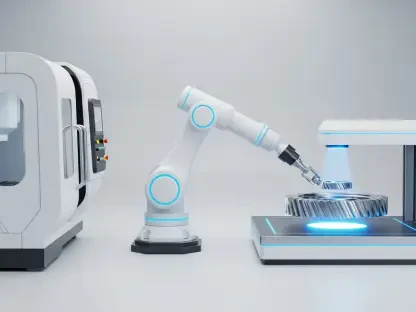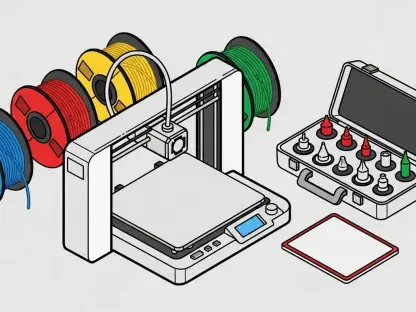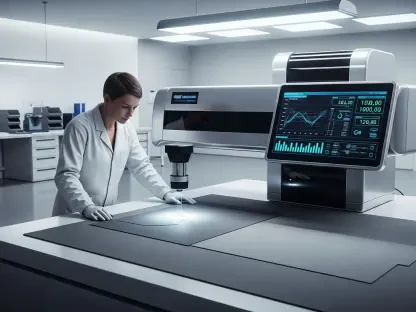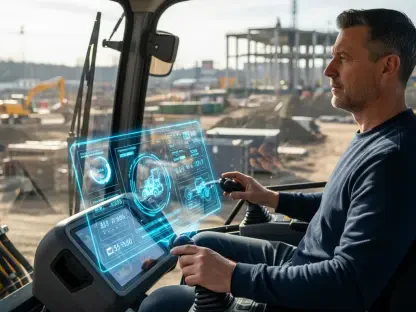The global advanced robotics market is experiencing exponential growth, driven by significant advancements in technology and an increasing demand for automation across various industries. The market is projected to grow from USD 47.5 billion in 2024 to USD 260.9 billion by 2033, reflecting a robust compound annual growth rate (CAGR) of 20.8%. This rapid expansion is transforming not just the scale but also the nature of industrial operations worldwide. As advanced robotics systems continue to integrate artificial intelligence (AI), machine learning, and sensor technologies, they enable autonomous decision-making and operations across various sectors such as healthcare, manufacturing, aerospace, and defense. The combination of advanced AI and machine learning algorithms allows these robots to continuously improve their efficiency over time, making them more effective at performing complex and dynamic tasks.
Technological Advancements Driving Growth
The market for advanced robotics is being propelled by significant technological advancements in AI, machine learning, and sensor integration. These innovations are enhancing the performance and capabilities of robotic systems, driving the demand for advanced robotics solutions across various industries. The integration of AI and machine learning allows robots to learn from their environment and improve their performance over time, making them more efficient and effective. This has led to robots that are capable of more complex activities, thus expanding their usability in numerous fields.
Autonomous Mobile Robots (AMRs) represent another key trend driving the market. AMRs are gaining popularity due to their flexibility, real-time navigation capabilities, and decision-making prowess. These robots are particularly beneficial in industries such as manufacturing, warehousing, and healthcare, where they streamline logistics processes and reduce labor costs. Their ability to operate autonomously and adapt to changing environments makes them a valuable asset. The flexibility of AMRs allows them to work in diverse settings, making them indispensable for improving efficiencies and reducing bottlenecks in various operations.
The Emergence of Robotics-as-a-Service (RaaS)
Robotics-as-a-Service (RaaS) is emerging as a cost-effective solution for businesses, especially small and medium-sized enterprises (SMEs), to access advanced robotic technologies. This model lowers the entry barriers for businesses by offering robotic solutions on a subscription or usage basis. RaaS allows companies to leverage the benefits of advanced robotics without the need for significant upfront investments, making automation more accessible to smaller operations.
The increasing adoption of collaborative robots, or cobots, is also contributing to the growth of the advanced robotics market. Cobots are designed to work alongside humans, enhancing productivity and safety in various applications. The growing use of cobots in manufacturing and logistics is a testament to their effectiveness in improving operational efficiency. Cobots are equipped with advanced sensors and AI algorithms which enable them to safely and efficiently work alongside human workers. This human-robot collaboration is particularly beneficial in applications requiring fine handling and decision-making, making operations more seamless and less prone to errors.
Government Initiatives and Support
Government support for technological innovation and automation is playing a crucial role in bolstering research and development (R&D) within the robotics sector. This encouragement from governments worldwide is fostering the growth of the advanced robotics market by pushing the adoption of cutting-edge technologies. Various initiatives aim to promote the development and deployment of advanced robotics solutions, thus driving innovation and adoption.
North America’s advanced robotics market is anticipated to lead, contributing 41.3% of the total revenue by 2024. This regional dominance can be attributed to its strong technological infrastructure, the presence of major industry players, and significant investments in AI and automation solutions. The United States alone is projected to grow from USD 16.5 billion in 2024 to USD 82.0 billion by 2033, with a CAGR of 19.5%. Such substantial growth underscores the importance of governmental and institutional support in propelling the market trends and advancements.
Market Segments and Applications
When breaking down the market segments, the hardware segment is anticipated to dominate the global market by capturing the largest share by the end of 2024. Hardware components such as robotic arms, sensors, and controllers play an essential role in the functioning of advanced robotics systems. The demand for high-quality and reliable hardware components is a significant driver behind the growth of this segment. As these hardware components become more advanced and affordable, their adoption in various industries continues to expand.
In terms of applications, industrial robots are expected to generate a significant portion of the market’s revenue by the close of 2024. These robots are widely used in manufacturing and production settings to automate tasks that require precision, speed, and endurance. The manufacturing sector is forecasted to hold the highest revenue share by 2024, driven by the need to improve productivity, reduce costs, and maintain competitiveness. Manufacturing industries are increasingly turning to advanced robotics to enhance their operations and gain a competitive edge.
Competitive Landscape and Key Players
The advanced robotics market is highly competitive, characterized by both large corporations and smaller companies offering innovative solutions across various industries. The market is moderately fragmented, with a trend towards increased fragmentation as new players enter the market. Leading companies in this vibrant sector include NXP Semiconductors, Rethink Robotics, DENSO Corporation, CMA Robotics, ST Robotics, Techman Robots, ABB, Mitsubishi Electric Corporation, and Universal Robots. These companies are continually enhancing their product offerings through technological advancements and strategic initiatives.
Some noteworthy strategic moves among key players include NXP Semiconductors leveraging its expertise in semiconductor technology for sensor integration, and Rethink Robotics focusing on developing user-friendly cobots tailored for manufacturing and logistics applications. The continuous innovation and strategic foresight demonstrated by these industry leaders underscore the dynamic nature of the advanced robotics market. As competition intensifies, technological innovation and strategic partnerships remain crucial for maintaining a competitive edge.
Opportunities and Challenges
The rising integration of collaborative robots, known as cobots, is unlocking new avenues for businesses aiming to boost productivity and safety. This is especially clear in industrial environments where cobots work side-by-side with human workers, handling tasks from precise painting to intricate assembly. The advent of Robotics as a Service (RaaS) has made these robotic solutions more affordable, allowing even smaller companies to embrace automation. As a result, innovations are thriving, and smaller businesses can remain competitive in various sectors.
However, these opportunities come with significant challenges. There is a noticeable shortage of skilled professionals who can effectively operate and maintain these advanced robotic systems. This skills gap restricts the widespread adoption of robotics and raises operational costs for businesses investing in this technology. Further complications arise from deployment issues, such as integrating robots into existing systems and the extensive training required for the workforce. Addressing these challenges demands a coordinated effort from industry leaders, educational institutions, and policymakers to develop a skilled workforce and create seamless integration strategies.
In light of these factors, the advanced robotics market is a landscape rich with possibilities but fraught with challenges. Successfully integrating these technologies requires well-thought-out investments, strategic planning, and a focus on workforce training. The future of various industries hinges on how effectively these obstacles are overcome and how extensively advanced robotics can be leveraged across different sectors.









